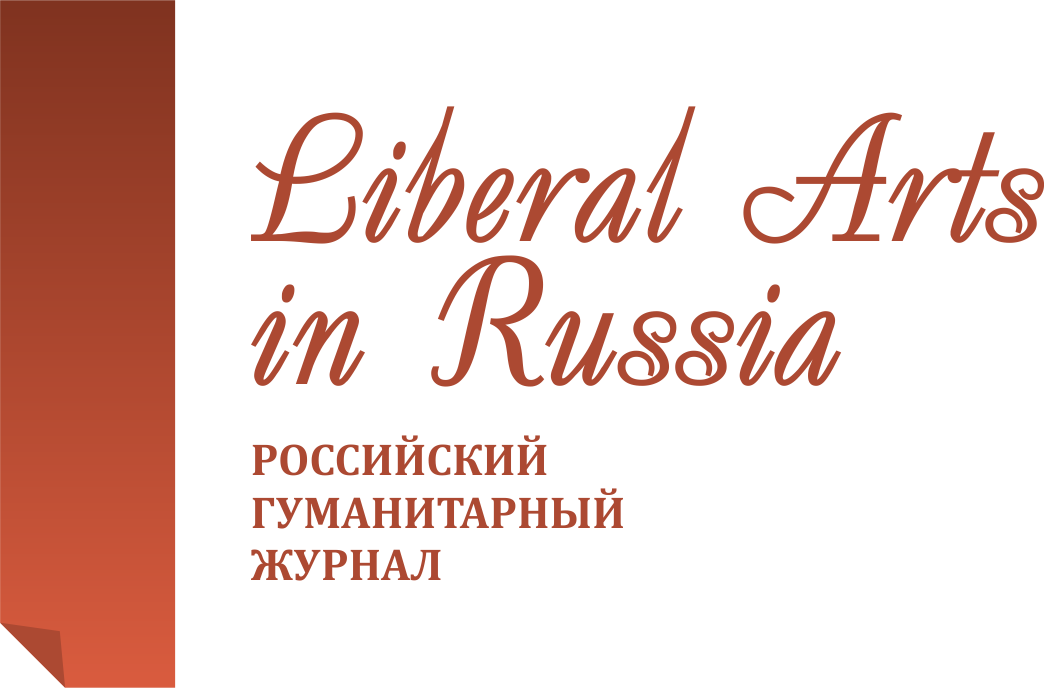Multilingualism: problems of definition and main research trends in contemporary linguistics
Liberal Arts in Russia. 2018. Vol. 7. No. 3. Pp. 232-240.
Get the full text (Russian) Email: osttania@yandex.ruAbstract
The end of the 20th and the beginning of the 21st centuries are marked by globalization and migration processes. These processes stipulate active language contacts between nations; as a result, a great expansion of multilingualism and its most widespread varieties, bilingualism and trilingualism, is observed worldwide. This led to a shift from bilingual research paradigm (which dominated linguistic science in the 20th century) to the multilingual one, wherein multilingualism is considered as a basic object of study, while bilingualism and trilingualism are treated as its forms. The author of the article reviews different types of multilingualism singled out within the frames of sociolinguistic and psycholinguistic approaches: national (social) multilingualism and individual multilingualism manifested in different forms. The authors discuss various problems connected with different definitions of multilingualism, multilingual individual, and basic components of individual multilinguality: linguistic proficiency, linguistic competence, and developmental trajectories. The article gives a brief review of the Dynamic Multilingual Model designed by P. Herdina and U. Jessner, its main principles (theoretical-systematic and holistic), and its main points. It is generally considered that the Dynamic Multilingual Model offers an effective way of approaching and analyzing a multilingual system of an individual irrespective of the number of languages it contains, as well as language proficiency. The scholars argue that the “ideal” model of multiligualism should satisfy the requirements of plasticity, adaptivity, and universalism that will allow applying it for studying various types of multilingualism.
Keywords
- • multilingualism
- • social and individual multilingualism
- • additive and subtractive multilingualism
- • multilingual individual
- • trilingualism
- • bilingualism
- • Dynamic Model of Multilingualism
References
- Vakhtin N. B., Golovko E. V. Sotsiolingvistika i sotsiologiya yazyka: uchebnoe posobie [Sociolinguistics and sociology of language: textbook]. Saint Petersburg: Gumanitarnaya Akademiya, 2004. Pp. 41.
- Zherebilo T. V. Slovar' lingvisticheskikh terminov [Dictionary of linguistic terms]: 5 ed. pererab. i dop. Nazran': Piligrim, 2010.
- Slovar' sotsiolingvisticheskikh terminov. URL: http://sociolinguistics.academic.ru/380/Mnogoyazychie.
- Yazykoznanie. Bol'shoi entsiklopedicheskii slovar' [Linguistics. Comprehensive encyclopedic dictionary]. Ed. V. N. Yartseva. Moscow: Bol'shaya Rossiiskaya entsiklopediya, 2000. Pp. 303.
- Aronin L., Singleton D. Multilingualism. Amsterdam: John Benjamins Publishing Company, 2012.
- Auer P., Wei L. Handbook of Multilingualism and Multilingual Communication. Berlin, 2007. Pp. 1-12.
- Bloomfield L. Language. New York: Allen & Unwin, 1933.
- Braun M. Göttingische Gelehrte Anzeigen. 1937. No. 4. Pp. 115.
- Briggs J., Peat F. Turbulent Mirror: An Illustrated Guide to Chaos Theory and the Science of Wholeness. New York: Harper & Row, 1989.
- Cenoz J. Annual Review of Applied Linguistics. Vol. 33. Cambridge: Cambridge University Press, 2013. Pp. 3-18.
- Cook V. Language Learning. Vol. 42. 1992. Pp. 557-591.
- Crystal D. A Dictionary of Linguistics and Phonetics: 6th edition. Blackwell Publishing, 2008.
- Diebold A. R. Language in Culture and Society. New York: Harper and Row, 1964. Pp. 495-511.
- Edwards J. Multilingualism. London: Routledge, 1994.
- Ethnologue: Languages of the world. 16th ed. Ed. M. P. Lewis. Dallas, TX: SIL International, 2009. URL: https://www.ethnologue.com/statistics/size.
- European Commission. Final report: High level group on multilingualism. Luxembourg: European Communities, 2007. Pp. 6.
- Felix S. Cognition and Language Growth. Gordrecht: Foris, 1987.
- Grosjean F. One Speaker, Two Languages: Cross-disciplinary Perspectives on Code-Switching. Cambridge: Cambridge University Press, 1995. Pp. 259-275.
- Grosjean F. Bilingual: Life and reality. Cambridge, MA: Harvard University Press, 2010.
- Herdina P., Jessner U. A Dynamic Model of Multilingualism: Perspectives of Change in Psycholoinguistics. Clevedon: Multilingual Matters LTD, 2002.
- Hoffmann C. International Journal of Bilingualism. 2001. Vol. 5. No. 1. Pp. 1-17. URL: http://usir.salford.ac.uk/1348/1/PDF_Towards_a_description_of_trilingual_competence_2001.pdf.
- Oxford Living Dictionaries. URL: https://en.oxforddictionaries.com/definition/trilingual.
- Sridhar Kamil K. Sociolinguistics and Language Teaching. Cambridge: Cambridge University Press, 1996. Pp. 50.
- Schönpflug U. English in Europe: the Acquisition of a Third Language. Multilingual Matters, 200. Pp. 121.
- Voorwinde S. ITL: Review of Applied Linguistics 52. 1981. Pp. 3-30.
- Wei L. The Blackwell handbook of research methods on bilingualism and multilingualism. Oxford, 2008. Pp. 3-17.
